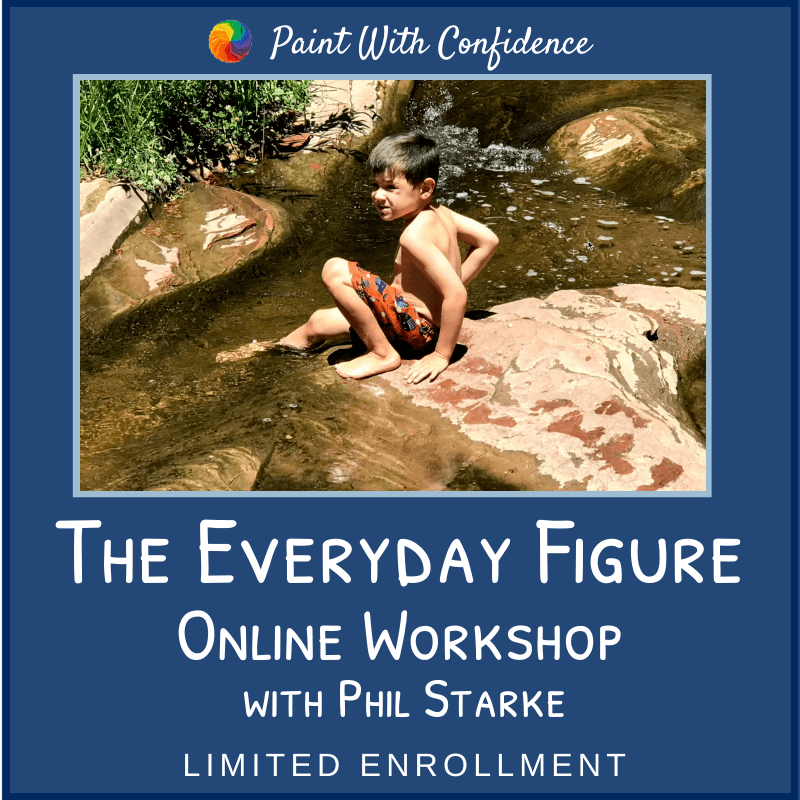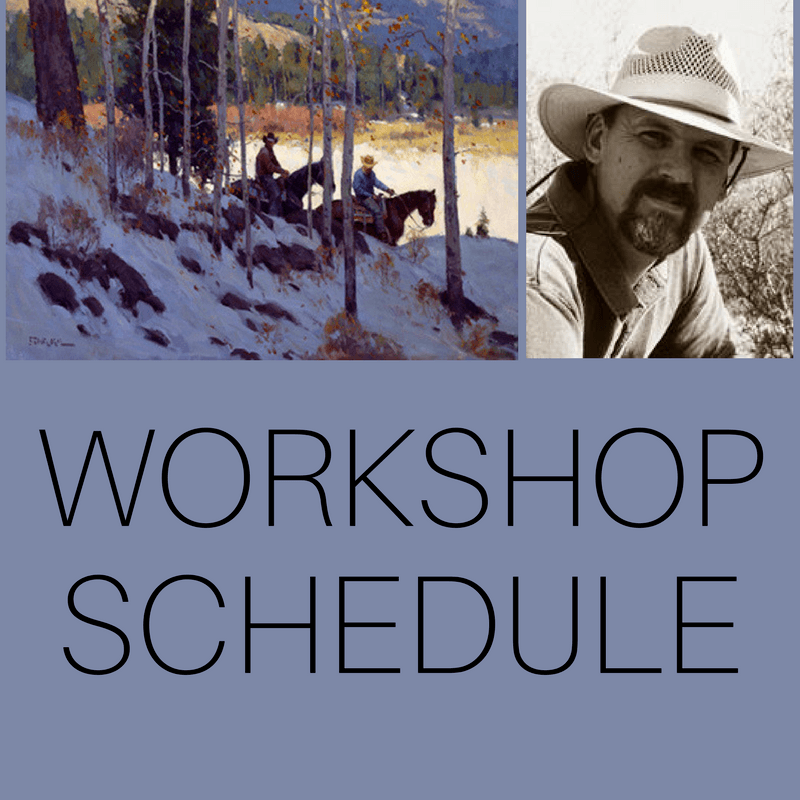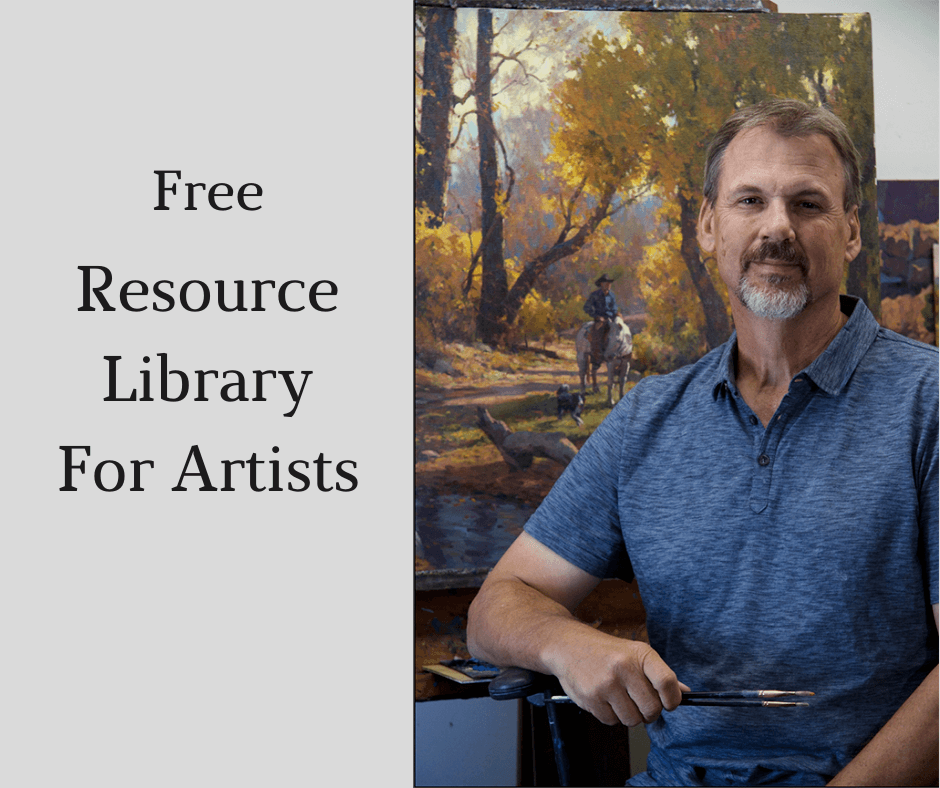Phil Starke Studio Newsletter - August 2021
Phil Starke is a professional fine artist with prestigious gallery representation, participates in national museum exhibitions, and teaches workshops and online fine art courses.

August 2021
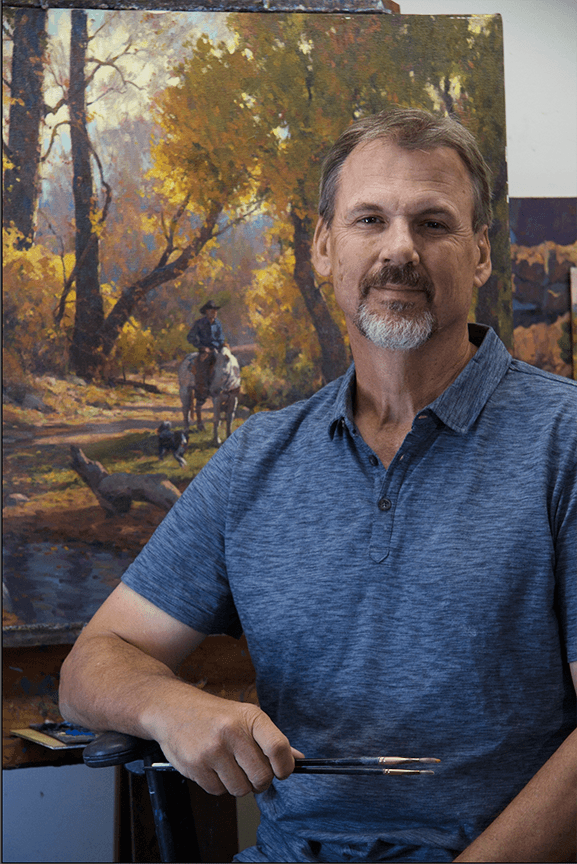
Everyone is getting along very well on the "farm". In August I look forward to September which is closer to October, when we will have cooler temperatures and more color variety.
Although late summer does have its beauty with color variations of warm and cool greens. Below are two late summer paintings. Anna Ruby Falls, 12x9, is a great place to paint in the summer. A lot of shade and cooler temperatures.

Click image to enlarge

Click image to enlarge

Click image to enlarge
The second painting is an 8x10 painted near Clayton, Georgia, titled "View from Rainy Mountain Rd." Backlit scenes create more contrast in value and color temperature.
I’m sending paintings to two shows this month, the first painting, titled "Boats in Oriental NC", 10x10, will be going to the NOAPS Show opening in September in Missoula, MT at the Dana Gallery.

Click image to enlarge

Click image to enlarge
The second painting is going to the American Impressionists Society Show also opening in September in Omaha, Nebraska at Gallery 1516. It's a 16x20 titled "The Family Fishing Boat, Symi Greece".
ARTIST AT A GLANCE
Anthony Johannes Thieme (1888 - 1954)
Anthony Johannes Thieme was born in the Dutch port city of Rotterdam in 1888. He studied at the Academy of Fine Arts in Rotterdam, at the Royal Academy at the Hague, and as an apprentice to George Hoecker. He was also a well known stage designer in Düsseldorf, Germany, an assistant to Antonio Mancini, an Italian Impressionist. After completing his studies, Thieme journeyed throughout Europe and South America, working in stage design to support his travels. Thieme first came to the United States in 1917 and initially worked as a set designer and book illustrator first in New York and later in Boston. By the late 1920s, Thieme had married and moved from Boston to Cape Ann in Rockport, Massachusetts, an emerging art colony. Like the other Rockport artists, his style was influenced by Impressionism, with special attention paid to the effects of light, but also by the Dutch tradition of seascape painting.
Throughout his career, Thieme favored painting en plein air, or outside, because it allowed him to better capture the atmosphere’s fleeting effects. He has been referred to as the “Master of Light and Shadow.”
Thieme’s paintings were often met with critical acclaim and were displayed at galleries in New York, London, and Paris. He also established the Thieme School of Art at Cape Ann in 1929 and taught classes out of his studio until 1943. Tragedy struck in 1946 when his studio burned to the ground, destroying much of the work he had produced over thirty years. Devastated by this loss, Thieme left Massachusetts in search of new adventures and inspirations. He traveled south to Charleston, South Carolina and was greatly inspired by the dense tropical foliage and the warm coastal light. He spent two months in Charleston, painting prolifically, before continuing on to Florida, the Caribbean, and Central America. Until his mysterious death in 1954, Thieme spent his summers in Rockport and the winter months based in St. Augustine, Florida.
Throughout his career, Thieme exhibited his work widely and was active in numerous art associations and clubs. He participated in exhibitions across the country including ones at the Pennsylvania Academy of the Fine Arts, and the Corcoran Gallery in Washington, DC. He was a member of the National Arts Club, the American Watercolor Society, the Salmagundi Club, the Boston Art Club, the Art Alliance of America, and the Rockport Art Association.
- IMAGE 2
- IMAGE 3
- IMAGE 4
- Image 5
- Image 6
- Image 7
- Image 8
- IMAGE 9
- IMAGE 10
- IMAGE 11
- IMAGE 12
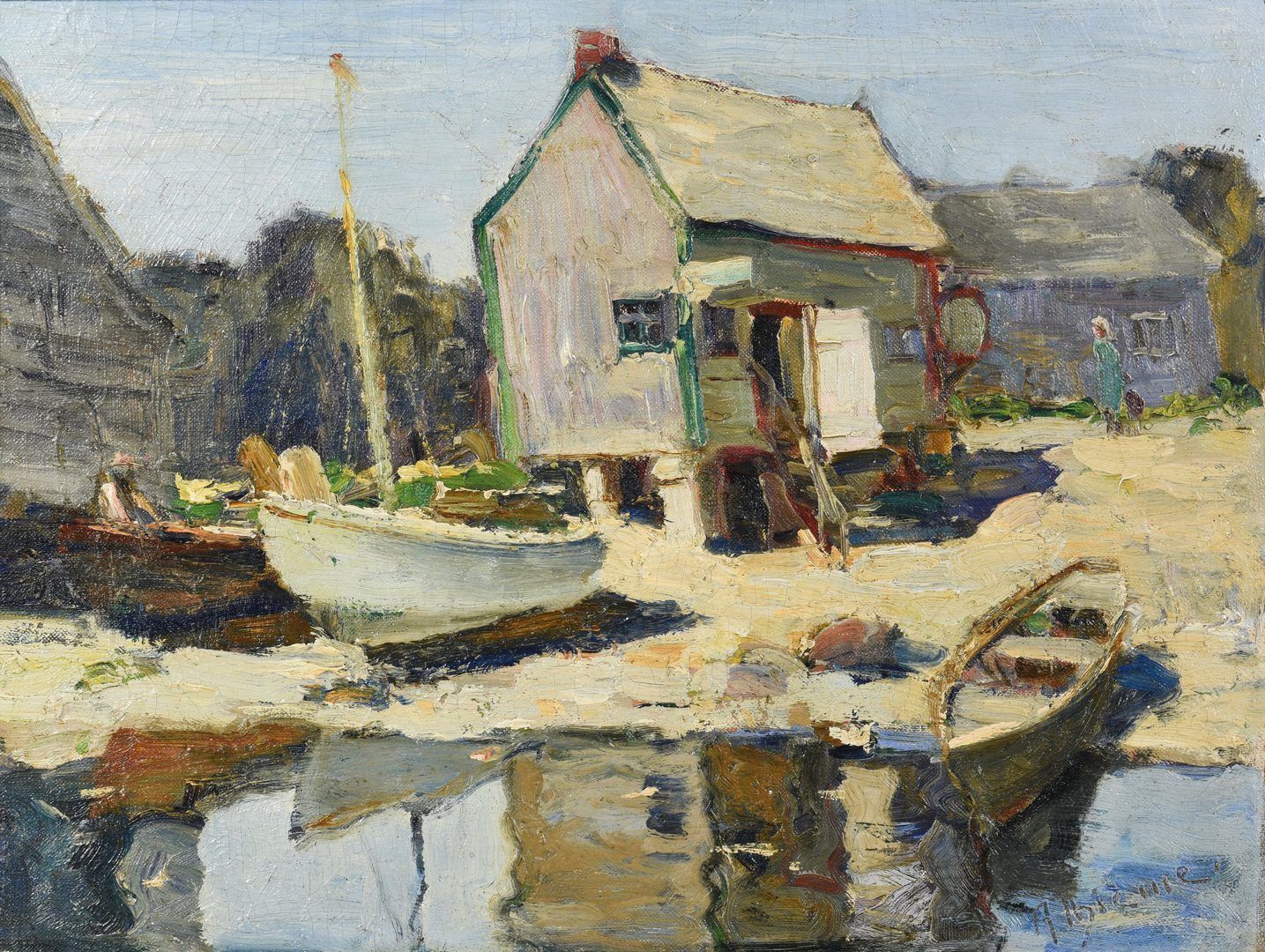
Click image to enlarge
ARTIST TIP
“Focusing On Values”
In this tip I want to take a look at a still life by Emil Carlson (1853-1932), an American artist who migrated to the United States from Denmark.
His paintings are very value oriented, he doesn’t focus on color in a lot of his work (although he did have periods of using more saturated color). So studying his paintings is a good exercise in values and edges, how he simplifies the values and uses harder and softer edges to create form and depth.
The first image is in color, he uses black and earth colors, not very different from the black and white version, It just has more temperature contrast. The shadows are dark and have the least color. There is a lot of strong value contrast which gives the painting a lot of strength.

click to enlarge image

click to enlarge image
In the black and white version we can see the values better in the light areas because we have eliminated the color, you can see the simple 3 values on the table cloth and the 4 values on the barrel, these give the objects depth and shape. Also the values on the bird in front are 3 values, simplified so that it's easier to read and not too detailed.
In the black and white the shell on the barrel is the lightest light, it also has the sharpest edge which brings it out in front of the objects on the table. The sharp edge on the shell also creates the center of interest and it’s the first thing that draws your attention.
Have you signed up to get my free Newsletter?
Don't miss out on all my great content!
If you have friends who would enjoy this newsletter, please share. Thank you!
















